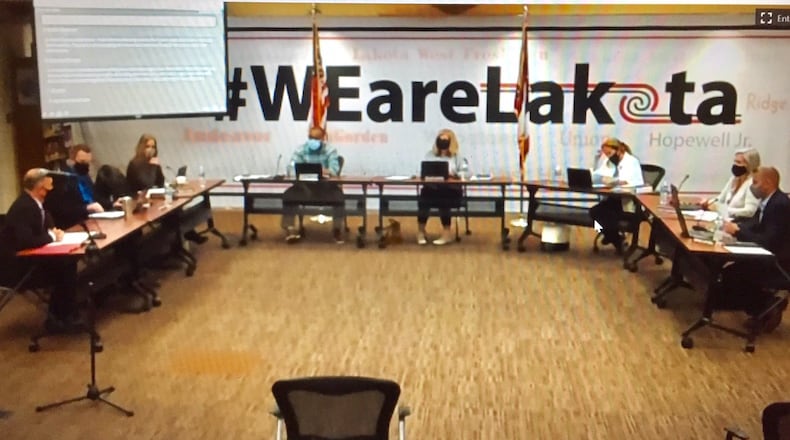“It’s a unique year,” Lakota Superintendent Matt Miller told the board referring to the sweeping impacts the pandemic has had on the current school year.
Led through the “COVID impact report” by Keith Koehne, executive director of curriculum and instruction for the Lakota, board members saw for the first time the many plans and goals district officials will try to help students who have fallen behind due to the challenges of the coronavirus.
Included in the report were concerns about lagging student achievement in reading levels in grades kindergarten through second and math proficiency in some elementary grades.
Other concerns highlighted included the need to alter the traditional summer school program, said Koehne.
The new plan calls for a split session summer school with the first half dedicated largely to helping students who fell behind this school year to catch up.
The second half of summer school will also be focused on helping students make a productive transition into the start of the 2021-2022 school year.
And the report also calls for adding tutors to helping lagging students, extending school-based mental health counseling through the summer and re-incorporating thousands of Virtual Learning Option (VLO) students back into live classrooms for the coming school year.
Lakota is the ninth most populous school system in Ohio with 16,800-students and the largest district in Butler County.
Governor DeWine has asked each of Ohio’s 613 public school systems to submit their recovery plans by April 1.
School Board Member Lynda O’Connor said Lakota’s wide-ranging plan is needed to combat achievement deficiencies among students caused by pandemic’s disruption.
“The first semester (student) failures are significantly up compared to the previous year’s,” said O’Connor, who praised the district’s new recovery plan.
Fellow member Brad Lovell said the upheaval in schools caused by the pandemic also provided “a ton of lessons” for district officials.
One of which is the popularity of the VLO program, which the district intends to continue to offer for the 2021-2022 school year.
“We’ve added staff members to help with the VLO program, said Koehne.
Lakota Treasurer Jenni Logan said it appears some of the additional staffing - and other program additions to help students improve academically - can be paid for by federal funds given to schools nationwide to better recover from the pandemic.
Many area school systems, along with Lakota, are relying on funds provided through the federal Elementary and Secondary School Emergency Relief (ESSER) Grant Program, which is part of the Coronavirus Aid, Relief, and Economic Security (CARES) Act, to pay for personnel and programs to help needy students recover academically.
About the Author

